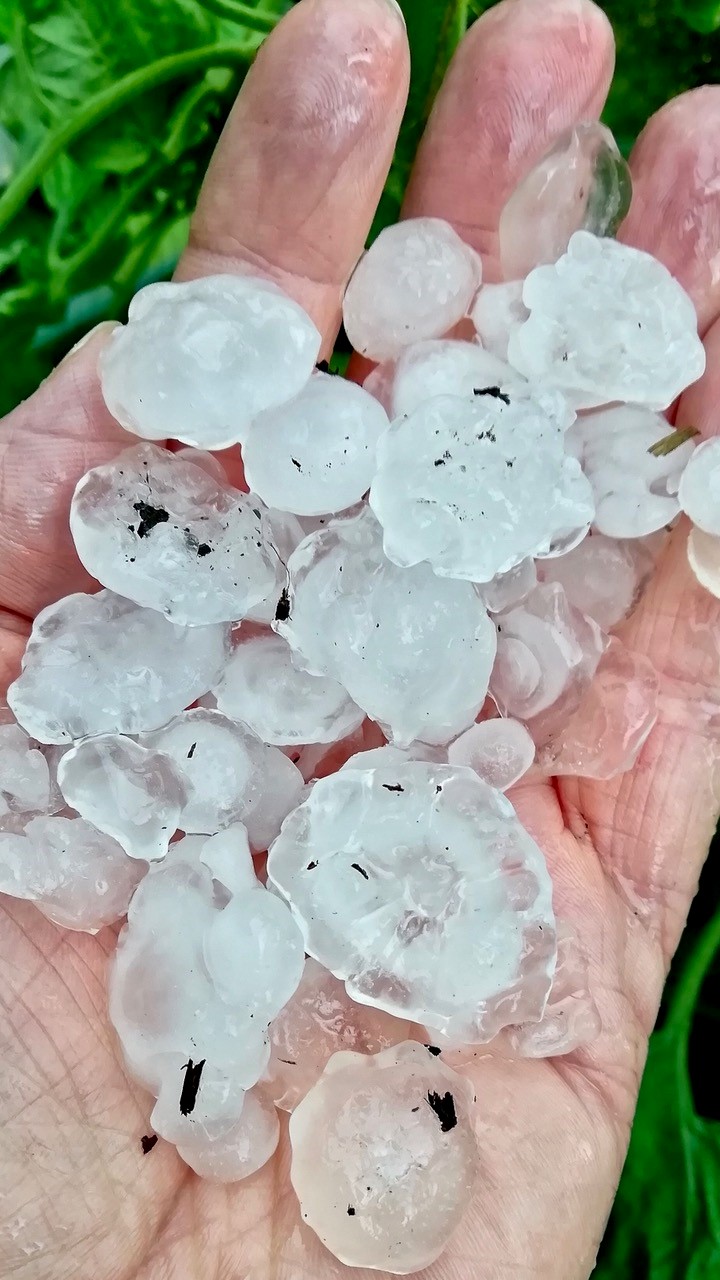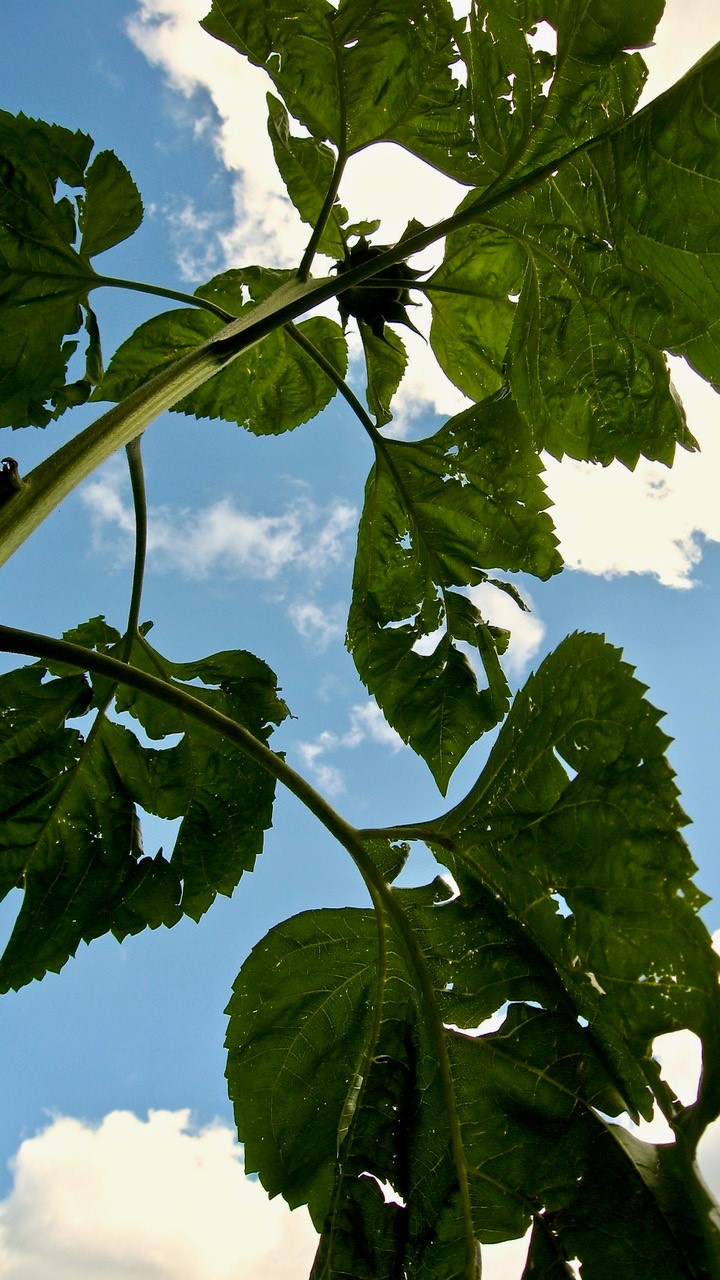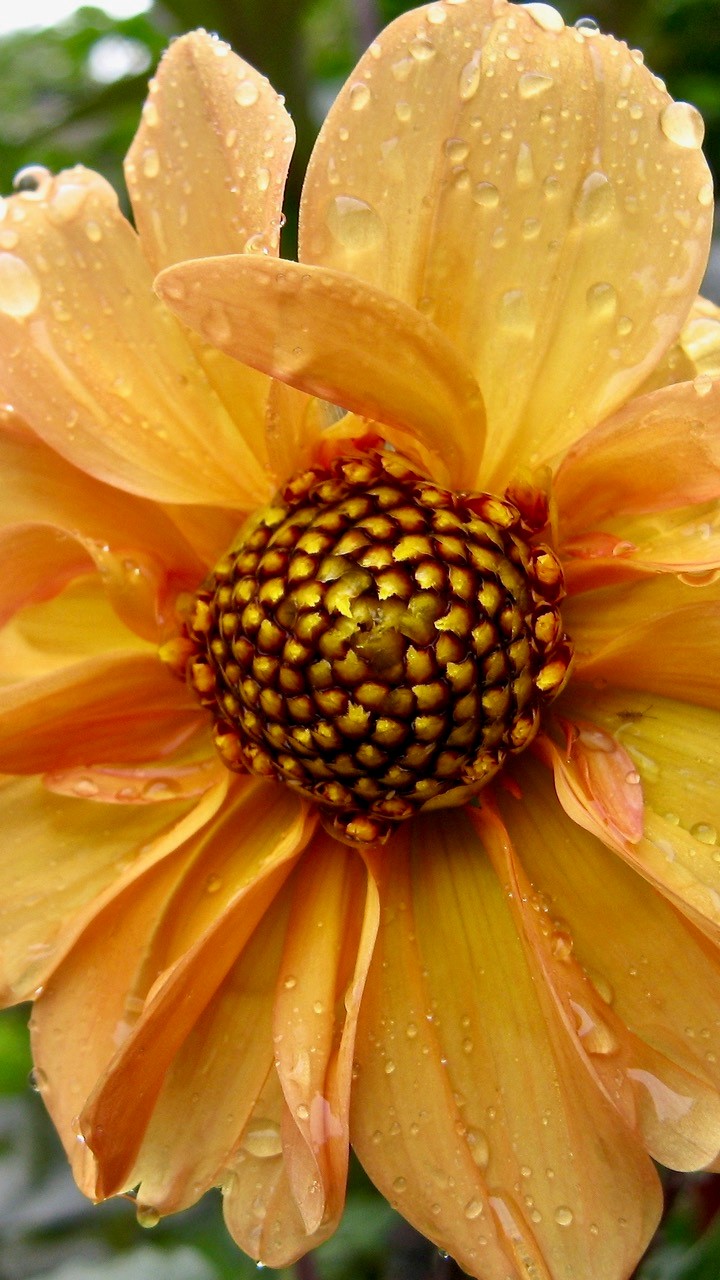A dystopian future of gardening at the mercy of climate chaos no longer needs to be imagined; it’s already happening, here and now.
I’m spooked. Just over a month ago, I was imagining what gardening in the not-too-distant future might look like. My mind’s eye conjured devastating early summer frosts, 40°C summer heatwaves, and violent, plant-shredding storms as the new normal.

Just over two weeks ago – when inch-wide hailstones hammered deafeningly on the greenhouse roof, slashed at the sunflowers and shot holes through the comfrey’s big, sappy leaves – sobering fact outdid fiction. Whopping lumps of ice rapping on the windows was scary, and came as a chilling reminder of something I’d somehow forgotten, aboard a fragile raft of optimism: that the not-too-distant is actually the here and now.
It was another sunny, sweltering, oppressive day (we hit 26.5°C); I knew it would go out with a bang when the hairs on my arms stood to attention. The hail-maker, with its dark, churning heart, grumbled its way from the south, sweeping over the hills into the valley. Day became night. Hot turned cold. There were flashes and bangs aplenty, before the storm itself seemed to drop from the sky, a chaotic mixture of torrential rain bullied along on wild, squally winds that blew – no, make that threw – the massive hailstones in every direction, including horizontally at the window panes. In seconds, the gutters were overflowing with ice, and for a while it sounded like the world was shattering. The bending, hail-strafed oak added its fresh shreddings to the gleaming, silver-green melting carpet. Flash-bang, and the lights went off (for six hours).
But then, minutes later, the veil of destruction moved on, off to batter valleys new. I scooped up a handful of the largest hailstones I have ever held, awe and gloom warring inside; pea-sized orbs of ice aren’t uncommon here, but they mostly clatter down in spring – not August. This is climate breakdown – not yet to come, but here and now. Within half an hour, the sun shone, as if none of it had ever happened. Day and warmth returned, ice carpets melted apace. The air stood still, and a soft, blueish mist rose from the clammy ground. I joined the fast-returning bumblebees to take stock of the damage to my treasured patch.

The bee-besieged dahlias were a post-storm surprise, getting away largely unscathed; a few of the bigger leaves were holed, but the blooms themselves were spared. Our giant sunflowers were the opposite; their leaves were ripped and torn, some hanging loose after being almost severed from the main stem. My comfrey plants were well punctured, along with the inulas and hostas; big leaves will be big losers in our new wild weather world. Foxglove rosettes took a pounding, but they’re fattening quickly, with new leaves already overgrowing the hail-nicked ones.
Taller, smaller-leaved plants seemed to fare better, perhaps because they have more give in them; Helianthus ‘Lemon Queen’ was back in the bee business right away. The 2.5m (8ft) skyward-reaching yellow-groove bamboo canes shrugged off heaven’s ice cubes – there’s not a bruised leaf to be seen. Roses fared remarkably well, too. Although splayed blooms and leaves showed minor bruises the next day, any buds were unaffected. The pliable foliage of angelica, aquilegia and hardy geraniums took no hits, and grasses, putting up scant resistance to inch-wide frozen discs, were damage-free. While the fruits of a potted outdoor bush tomato were beaten to red pulp, a whisker away, on the other side of the greenhouse glass, other trusses hung unblemished.
My greenhouse is my haven from whatever the North Waleian weather dishes out – mostly rain, though even that now falls erratically and with growing intensity. In our forever-changed, here and now world of flux, greenhouses will truly be our sanctuaries as our chaotic, angry climate flexes its muscles. Polytunnels will pass muster as refuges, too, but they’re prone to being punched through by big, vicious hail (and they add even more potential pollution to our plastic-drenched living world). But we won’t be able to live out all of our gardening dreams under glass (or plastic), any more than we can avoid the turbulent, volatile and topsy-turvy seasons in which we’ll try to sow them.
As the old normal fades with each passing day, it’s hard – painful, even – to start to imagine how the ‘gardening world’ en masse – the businesses, publications, programmes, organisations and destinations that profit from and depend on us gardeners – will respond. I’ve yet to see any business-as-usual gardening publications taking climate breakdown or ecological collapse seriously – there’s only the occasional odd mention, just to keep up the appearance of having ‘covered it’.

I’m not holding my breath for a magazine front cover picture of a once to-die-for summer border flayed to ribbons by hail. Even less likely is the headline ‘Is this the new gardening normal?’, linking to an article detailing the destruction, the owners’ despair, some honesty on why it’s happening, and why it isn’t just ‘bad weather’. More likely, it’ll be another media-in-denial dodge – ‘The best plants to choose for a hail-proof plot!’ should fudge it nicely. What chance is there that a Gardeners’ Question Time audience member will open a coolbox stuffed with conker-sized hailstones, and ask the panel for advice on gardening responsibly in ways that’ll ensure they don’t get any bigger? I’ll dream on.
You have to feel for public gardens that will find themselves in the track of a violent summer storm. Months of skilled, dedicated work will be torn down by ice in minutes, leaving battered borders that no one will want to pay to see – and that’s only once the place has reopened after any fallen trees and other damage, such as flash flooding, have been attended to. The garden centre or nursery down the road, which displays most of its stock outdoors, will be struggling to sell bruised and battered plants to fickle, must-be-perfect customers. But ice cream sales will doubtless boom, and it’s only a matter of time before some dim retail spark spins our climate emergency as just another opportunity to flog us something we’ve prayed we’d never need: anti-hail netting (already a staple on fruit farms). It’ll be sold from a roll, next to the stack of climate-wrecking peat-based compost…
And sanctuaries they may be, but our greenhouses are not invincible in the face of nature’s ire. Hailstones the size of golf balls have fallen from UK skies in recent years – big enough to dent cars and smash glass – and stones up to 23cm (9in) across have been birthed by ‘supercell’ thunderstorms overseas.
As the hailstones numbing my fingers melted away, a calmer, gentler world, the one that has nurtured my gardening dreams, vanished with them. I’m sad, perplexed, angry and quietly scared that a future I was imagining only weeks ago, is actually here. Now.
Text and images © John Walker
Find John on Twitter @earthFgardener










